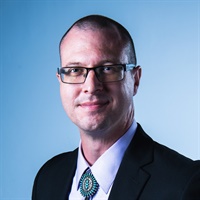Find and Use Historical Web Information with the Internet Archive Wayback Machine
Total Credits: 1 including 1 General
- Average Rating:
- 71
- Credit Type:
- General | Technology Proficiency
- Faculty:
- Nicholas Taylor
- Course Levels:
- Intermediate
- Duration:
- 1 Hour 03 Minutes
- License:
- Access for 365 day(s) after purchase.
Description
Imagine that you could find and have admitted as evidence virtually any public historical web content, and without having to rely on discovery from the opposing party. Imagine that you could thereby establish when specific information was first published, updated, or available online - e.g., patent disclosures, marks and copyrighted materials, terms of service, advertised claims regarding products or services, business relationships, and more. Imagine that the maintainer of such a repository made it freely available to all and were committed to both the breadth and integrity of its contents.
That is the potential of the Internet Archive Wayback Machine (IAWM), a free web-based tool that provides access to hundreds of billions of archived web pages dating from 1997 to present.
In this webinar, Presenter Nicholas Taylor will:
- Provide background on what IAWM is, how it works, and the scope of content to which it provides access;
- Walk through IAWM features that are useful for the discovery of specific information or web content;
- Review strategies and trends for authentication and admissibility of IAWM evidence in U.S. federal courts; and
- Explain critical differences in the behavior of archived websites accessible through IAWM and “live” websites.
Folks who join this webinar should come away with a better understanding of the potential of IAWM for litigation use cases, be able to use IAWM more effectively to find relevant information, be better able to interpret evidence from IAWM, and have greater success in either having evidence from IAWM admitted, or contesting its admission, in legal proceedings.
Handouts
| Find and Use Historical Web Information with the Wayback Machine (2025) (36.1 MB) | 72 Pages | Available after Purchase |
Faculty

Nicholas Taylor Related Seminars and Products
Nicholas Taylor provides expert witness services related to evidence produced from the Internet Archive Wayback Machine, other web archive repositories, and public websites. He is commonly engaged to help determine when particular information or web content may have been published, updated, available, or discoverable on the web, as well as to authenticate and interpret archived web content for evidentiary purposes.
His regular full-time employment is as the Deputy Group Leader for Technology Strategy and Services at the Los Alamos National Laboratory Research Library. In this role, he oversees IT research and development efforts focused on digital repository services, applied information science, and system operations.
Prior to Los Alamos National Laboratory, he managed and supported digital library, digital preservation, library technology, and web archiving programs at Stanford Libraries, the Library of Congress, and the U.S. Supreme Court Library. He possesses an M.A. in Communication, Culture, and Technology from Georgetown University and an M.L.S. from the University of Maryland, College Park.
Reviews
| 5 |
|
| 4 |
|
| 3 |
|
| 2 |
|
| 1 |
|










